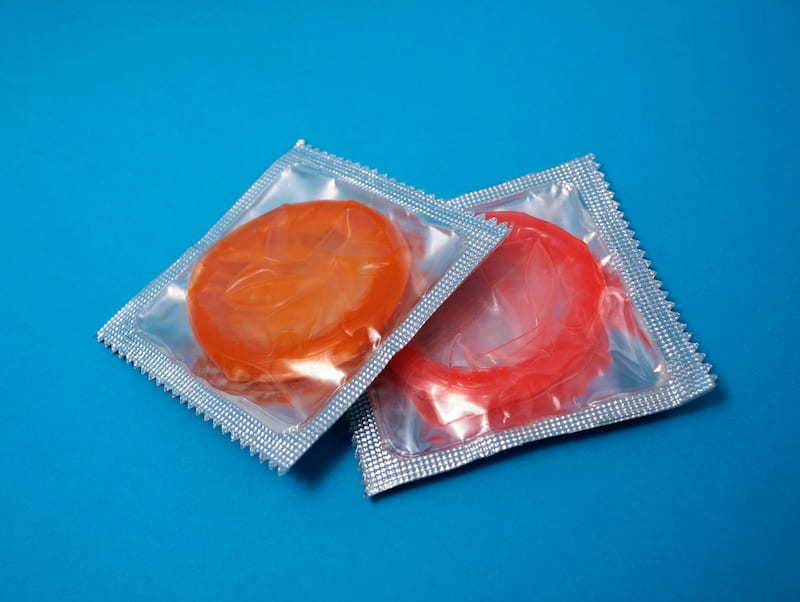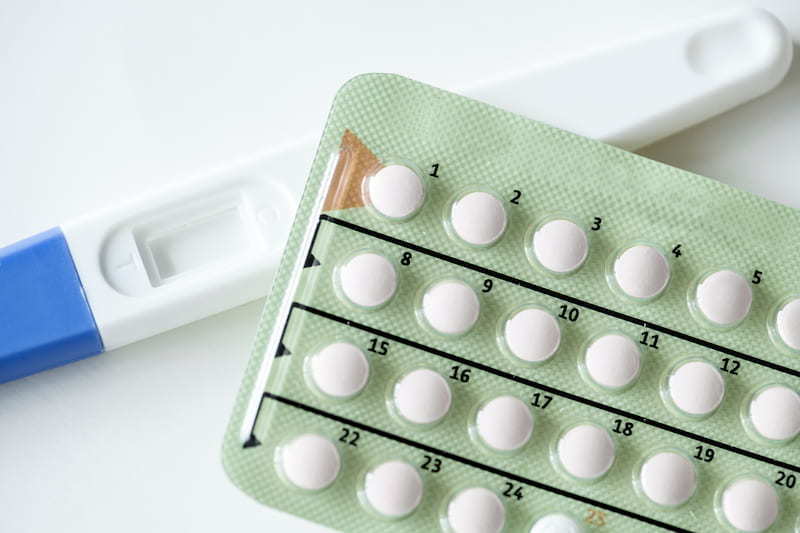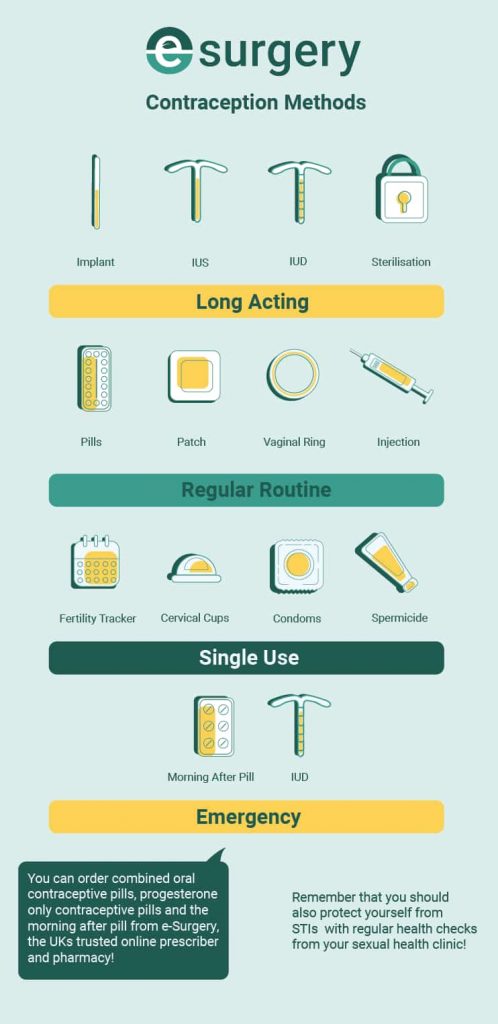
Contraception can be a bit of a mine field to navigate. Luckily there are many different options nowadays that work in a variety of different ways to help manage periods, prevent pregnancy and improve conditions like acne and endometriosis. To help you work out the best option here is an A-Z breakdown of contraception science, facts and methods to get you started! (Pre-warning, we had to get a little creative with some of these!)
A: Awareness (Natural Family Planning)
Fertility awareness (or natural family planning) involves tracking and monitoring your fertility based on your periods, temperature, and cervical mucus (lovely!). If done correctly this method can be effective, but can take months of practice to get right, and there will always be a risk of pregnancy (as well as STI’s).
B: But I’m Not Having Sex
Contraceptives are not only used to prevent pregnancy, many women use things like the pill to manage their periods and hormones, as well helping with acne, Poly-cystic Ovary Syndrome, PMS and Endometriosis. It’s also important to remember that even without sex, you can still catch some STI’s like herpes and chlamydia through other forms of sexual contact, so it’s important to stay protected and use a condom. Speaking of which…
C: Condoms

Condoms are an alternative to hormonal contraceptives like the pill, coil or implant. They are also one of the few options on this list that provides you with protection from STI’s. If used correctly they are 98% effective at preventing pregnancy.
D: Diaphragm
A diaphragm is small, silicone dome that women can place into the vagina before sex and remove 6 hours after, and is up to 96% effective when used in combination with spermacide. This is a form of barrier contraception, which stops the sperm from being able to fertilise the egg.
E: Estrogen (Ethinylestradiol)
Ethinylestradiol is an estrogen medication used in many forms of birth control, often in combination with other medications such as in Rigevidon, but it is also used on it’s own. Estrogen is actually a collection of different hormones that regulate female reproduction, as well as many other important roles within both men and women.
F: Female Condoms
Female condoms are up to 95% effective, and are similar to regular condoms except they are placed inside the vagina. They also protect from STI’s, including chlamydia, herpes and HIV.
G: Getting the Implant
The implant is a small, plastic rod that is placed under the skin and lasts for 3 years by slowly releasing progesterone. It is more than 99% effective, so is a great option if you are likely to forget to take the pill.
H: Hormonal Coil
The hormonal coil (or IUS) works in a similar way to the implant, as it releases progesterone slowly and is more than 99% effective. It is a small T shaped plastic device that is inserted into the uterus by a doctor or nurse, and is similar to the IUD but does not contain copper.
I: IUD
The IUD coil is a small piece of T shaped plastic combined with a copper device that is more than 99% effective and can protect you from pregnancy for 5-10 years. It works by slowly releasing copper (rather than progesterone) that affects cervical mucus, making it more difficult for a sperm and egg to survive.
J: Injection

Depending on the type of injection, this form of contraception can last either 8 or 13 weeks. It steadily releases the hormone progesterone, which prevents the release of an egg.
K: Kissing
Although pretty self explanatory, you cannot get pregnant from kissing. The only risks are cold sores which are very contagious and caused by the Herpes virus. Although annoying and slightly painful, cold sores are very easy to treat with medication, such as Aciclovir cream.
L: Latex Allergy
Condoms are a great way to prevent the transmission of STI’s and also prevent pregnancy, but some people can be allergic to Latex, the thin rubber than most condoms are made of. Luckily most high street pharmacies/online stores will stock latex free condoms that are just as effective without the risk of an allergic reaction.
M: Mini-pill
The ‘mini-pill’ or progesterone only pill is more than 99% effective, and it is a popular choice amongst women. It is taken everyday at the same time, and does not contain any estrogen unlike the combined pill, as estrogen does not affect everyone the same way.
N: Norgestimate
Norgestimate is a synthetic version of progesterone, a medication used in combination with Ethinylestradiol (an estrogen medication) in contraceptive pills such as Rigevidon, but cannot be used on its own.
O: Old Age (How Long Do You Need To Take Contraception?)

Until you hit the menopause (this differs in age but often happens between the ages of 45-55) there is still a chance of pregnancy, which is possibly why 75% of pregnancies in women over 40 are unplanned. Of course STI’s can be caught at any age, so the best way to avoid this is to use condoms and get regular checkups.
P: Patch and Progesterone
The contraceptive patch releases the same hormones as the combined pill (Progesterone and Estrogen), except it is a small, stick on patch that can be worn for up to 1 week. It has the benefit of being unaffected if you are sick or have diarrhoea, unlike the combined-pill and the mini-pill. Progesterone is part of a group of hormones called progestogens, which play an important part in the menstrual cycle and are a component of many contraceptives.
Q: Quickly! The Morning After Pill
When your contraceptive fails (eg. it’s taken late, a condom breaks, you have been ill or just forgot) the morning after pill works as an emergency contraception to prevent pregnancy. It can be taken either 3 days (Levonelle) or 5 days (ellaOne) after sex. Levonelle contains levonorgestrel, a synthetic version of progesterone, and ellaOne contains Ulipristal Acetate which stops progesterone working normally.
R: Ring
A vaginal ring is a small, flexible plastic ring that is inserted into the vagina, similarly to the coil except it can be done at home and is much less invasive. It releases a continuous dose of the hormones Oestrogen and Progestogen for 3 weeks and is then removed for 1 week. After this you can insert a new ring. It is more than 99% effective, can be used with tampons and will continue to be effective even if you are sick.
S: Stop Before
Stopping sex before the ‘finish’ or the ‘pull-out’ method involves a man pulling out before ejaculation to avoid pregnancy. Of course this does not prevent STI’s and is an unreliable form of contraception, as 28 out of 100 women using the withdrawal method will get pregnant in a year.
T: Tracking Apps

Lots of women will use tracking helps to help monitor their periods, and some women find them a useful tool when using the family planning method of contraception. Although as mentioned above, these ‘natural’ methods are less effective than barrier or hormonal methods at preventing pregnancy. You can find more in our article about period technology.
U: UTI
Some studies have suggested that contraceptive pills can lead to higher rates of UTI’s, though there are counter studies that prove this not to be the case. It is really down to your individual preference, and if you find one method isn’t working or causing discomfort try another. UTI’s can also be caused by sexual intercourse, and are particularly common in women, so it is always handy to have a course of UTI treatment ready.
V: Virginity
Even if you have never had sex, or don’t plan on it in the future, contraception can be used for a variety of reasons other than preventing pregnancy. It’s also important to remember that even without sex, you can still catch STI’s through sexual contact, so it’s important to stay protected!
W: When/Where Can I Get Contraception?
You can have access to free contraceptive advice from the NHS at any age, as long as you are mature enough to understand the decisions involved. Anyone under the age of 16 does not have to inform their parents though it is recommended, and they would only be informed if it was felt that you were in danger. You can get most contraception at your GP surgery, a GUM clinic or Sexual Health Service. Over 18’s can also purchase their contraception online, see what e-Surgery has to offer here or Ask a Pharmacist for advice.
X: Excuses (not to)
There are many reasons why a person might not need or want to go on contraception. For example: it might be unnecessary, they are trying for a baby, they have health conditions that prevent them from taking contraception or they simply don’t want to! What’s important is that there are options to choose from and the ability to decide what works best for you and your health.
Y: Period Delay
(You were warned we had to get creative!) For some women contraception isn’t an option, or perhaps they rely on barrier methods like the diaphragm , condom or female condom that have no effect in their menstrual cycle. Norethisterone is a great option to delay your period for up to 17 days, and is great to have at home as a back up! It’s important to remember that period delay is not a form of contraception as you can still get pregnant: it is only used to manage the timing of your period.
Z: Combined Pill

The combined pill contains artificial versions of estrogen and progesterone, such as Norgestimate and Ethinylestradiol. It is over 99% effective, and is taken for 21 days with a 7 day break in between each course, though there are a variety of brands and types. As well as preventing pregnancy it is used to help with PMS and regulate women’s cycles.
If you are feeling unsure about what contraceptive is right for you, make an appointment with your GP and find a solution that works for you.
The handy image below summaries (almost) everything we just covered in the article!

Further Reading
- Find Sexual Health Services | NHS
- Contraception Methods | PatientInfo









